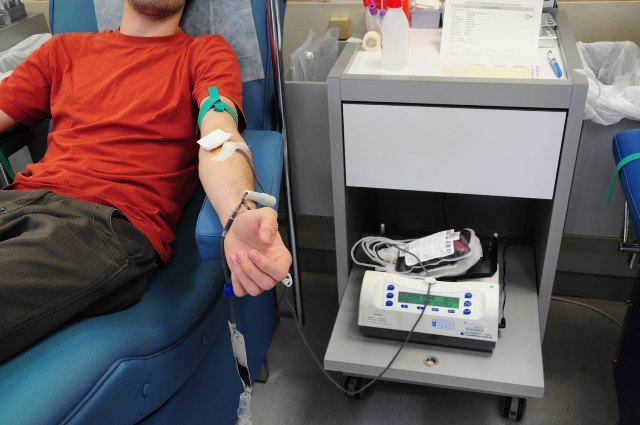Iron overload...too much of a good thing
Expert reviewers
Essentials
- Type 1 haemochromatosis causes patients to store excess iron in their bodies
- When undetected, it can result in significant health complications and death
- If detected early, relatively simple treatments can make a big difference
- Also known as hereditary haemochromatosis (HH), it is the most common genetic condition in Australia
What is hereditary haemochromatosis?
Haemochromatosis—also known as inherited iron overload—is a condition that causes the body to absorb and store excess amounts of iron. It’s the most common genetic disorder in Australia, affecting around 1 in every 200 people of Northern European decent.
Just like Goldilocks, our bodies like things to be ‘just right’. So while it’s true that iron is essential for the human body to function properly (for example, iron is a critical component of haemoglobin, which carries oxygen around the body), too much of a good thing can be harmful. Unfortunately, excess iron doesn’t equate to excess energy; in fact it’s often quite the opposite.
Sufferers may experience a range of symptoms including fatigue, joint pain, weakness, weight loss and abdominal pain. Over time, the excess iron accumulates in specific areas of the body, eventually causing damage to tissues and organs including the liver and heart. This can result in complications such as liver disease (cirrhosis), liver cancer, heart failure, diabetes, pigmented skin, arthritis, early menopause and impotence. If left undiagnosed, HH can be fatal.
The good news is that early diagnosis, intervention and treatment can prevent further complications and allow a patient to live a normal life.
What causes haemochromatosis?
Type 1 haemochromatosis is hereditary, so if you have the condition, you can thank your parents. While haemochromatosis can be caused by faults in a range of different genes, most people with the condition have mutations in the HFE gene. The name HFE comes from ‘high iron’ (Fe being the chemical symbol for iron).
A properly functioning HFE gene provides instructions for the production of a protein which is located on the surface of cells, generally in the liver and intestinal cells.
The HFE protein interacts with other proteins on the cell surface to detect the amount of iron in the body. It’s the job of the HFE protein to regulate the production of another protein called hepcidin. Produced by the liver, hepcidin is considered to be the ‘master’ iron regulatory hormone. It determines how much iron is absorbed from the diet and released from various storage sites around the body. So when the proteins responsible for iron sensing and absorption are working correctly, iron absorption in the body is tightly controlled. This means that for most of us, no matter how much meat, tofu or seafood we eat, our body will only take in as much iron as it needs.

If the HFE gene is faulty, however, our bodies begin to have an ‘all you can absorb’ iron party.
Within the HFE gene there are more than 20 mutations that can cause hemochromatosis. Of these, there are two particular mutations—known as p.C282Y and p.H63D—that are the most common.
Both of these mutations change one of the protein building blocks in the HFE protein. These mutations stop the HFE protein from accessing the cell surface, making it unable to interact with the hepcidin protein. This causes iron regulation to be disrupted, and the body begins to absorb more iron than is necessary from the diet.
Almost everyone who suffers from severe haemochromatosis has two copies of the p.C282Y gene fault.
Interestingly, however, being a double-dose C282Y gene carrier does not automatically mean you will suffer from severe haemochromatosis. Within this group:
- around 60 per cent of women and 80 per cent of men will experience raised iron levels in their body, while
- up to 10 per cent of women and 45 per cent of men will develop significant health issues, such as cirrhosis of the liver.
And just to baffle scientists even more, many in the double-dose faulty gene group will have no problems at all. The reasons for this are still being investigated.
Regarding the other faulty genes, if you happen to have two copies of p.H63D you’re in luck—you’re unlikely to have any problems at all. If, however, you have a copy of both the p.C282Y fault and the p.H63D fault you may experience raised iron levels, but it’s unlikely to result in serious problems.
Ahh genetics, just like a box of chocolates—you never know what you’re gonna get!
Symptoms, diagnosis and treatment
Haemochromatosis sounds like it should be easy to diagnose, but the problem is its general symptoms are relatively common health complaints—tiredness, abdominal pain, joint pain, and weakness. Sufferers of HH may experience one or two of these, all of them, or none of them (though no symptoms does not mean no damage is being done).

The disorder is generally diagnosed in people over 40 years of age, because it takes time for iron levels in the body to accumulate. Women may be diagnosed later due to blood loss during child-bearing years (through menstruation and childbirth), which removes iron from the body. Younger people may have the condition, but have not yet experienced any adverse symptoms. Each patient will also have their own unique level at which they may begin to feel the effects of iron overload. Because haemochromatosis is hereditary, it helps to know your family health history and talk about it with relatives.
Symptoms of higher levels of iron overload in the system include:
|
Organ |
Symptoms |
If left untreated may result in |
|
Liver |
Pain, enlarged liver, fatigue Jaundice, reduced body hair, itching, easy bruising |
Liver fibrosis, cirrhosis, liver cancer |
|
Heart |
Irregular heartbeat, shortness of breath, fatigue, swollen ankles |
Heart failure |
|
Pancreas |
Thirst, increased urination, tiredness, constant hunger, dizziness, blurred vision |
Diabetes—which can lead to kidney failure, heart attack and blindness. |
|
Joints |
Pain in the hands, wrists, shoulders, hips, knees and ankles. |
Arthritis |
|
Skin |
Grey or bronze discolouration |
|
|
Sex organs (women) |
Irregular periods, early menopause, loss of libido |
Hypogonadism—inhibited production of oestrogen |
|
Sex organs (men) |
Impotence, loss of libido, shrinking testicles, development of ‘man boobs’. |
Hypogonadism—inhibited production of testosterone |
Being aware of the symptoms yourself, and having a doctor who is familiar with the condition, can assist in early detection. A simple blood test can confirm haemochromatosis and, if discovered early, treatment is relatively simple and easy. The aim is to restore and then maintain safe iron levels in the body.
The most common form of treatment is venesection—the removal of between 300 ml and 500 ml of blood (similar to a blood donation) via a needle in the arm. This method has been used successfully since the 1940s and is safe, effective and low cost. Since haemochromatosis is not a blood disease, this blood can be safely transfused into other people (a win–win scenario) as long as there are no other reasons to prevent that person donating blood.

The reason venesection works is because once blood is removed from your system, some of the excess iron that is being stored by your body moves out of storage and is used to make new red blood cells.
For those with very high iron levels, unloading this excess iron from your system may take multiple venesections. These can be done weekly and continue over several months until iron levels are at the lower end of normal. Once this has been achieved, a patient moves on to the life-long maintenance phase, which includes regular monitoring of iron levels, and, based on those results, generally several venesections per year to maintain iron stores at a safe level.
There are a few individuals who, for various reasons, cannot tolerate venesection therapy. In these instances, patients can be given drugs known as ‘iron chelators’, which are specially formulated to bind to iron so that it can be excreted from the body via urine.
Although we absorb iron from the food we eat, including meat, seafood, dairy, eggs, tofu and greens (as well as iron-fortified products like cereals and pastas), changing your diet alone will not help in the treatment of haemochromatosis. So you can continue to eat steaks and spinach, as long as you ensure you keep up to date with your venesections or iron chelators.
While haemochromatosis has the potential to be a serious health issue, the good news is that, if detected early, patients can lead a full and healthy life. An awareness and understanding of the symptoms of HH, knowing your family’s medical history and annual check-ups with your GP can help to identify the condition early and manage it accordingly.





